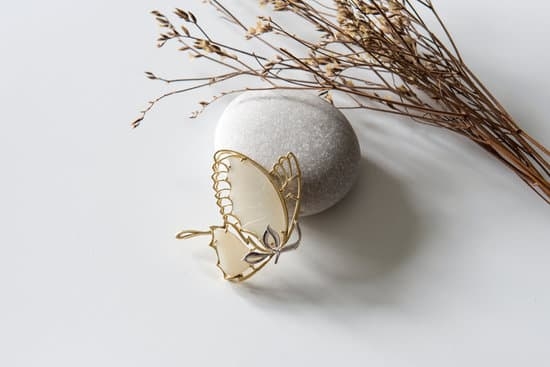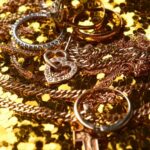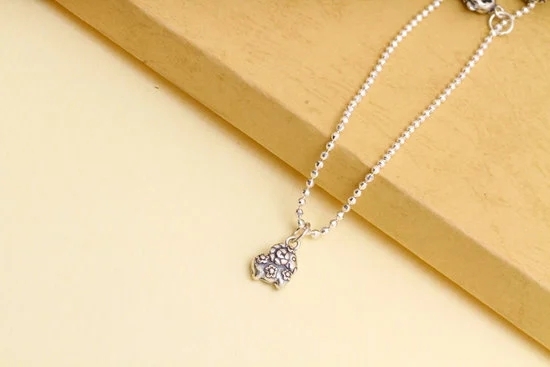Diamond jewelry holds a timeless allure and is considered one of the most valuable and cherished possessions. Whether it’s a dazzling engagement ring or a stunning necklace, properly valuing diamond jewelry is essential for various reasons.
Determining the worth of a piece not only helps in making informed buying decisions but also plays a crucial role when it comes to insurance, resale, and estate planning. In this article, we will delve into the intricacies of valuing diamond jewelry, providing you with the knowledge and tools you need to accurately assess its true value.
Valuing diamond jewelry involves decoding several key factors that significantly impact its worth. These factors are commonly known as the 4Cs – carat weight, clarity grade, color grade, and cut grade. Each of these elements contributes to the overall value of a piece and requires careful assessment. We will guide you through each step of evaluating these critical aspects, helping you gain a deeper understanding of how they influence diamond jewelry’s worth.
To effectively evaluate a piece’s carat weight, one must consider various factors such as size, shape, and aesthetics. Additionally, we will explore the significance of assessing diamond jewelry’s clarity grade and unravel the mystery behind determining its color grade. Understanding how each aspect contributes to the overall value will enable you to make more informed decisions when choosing or appraising your diamond pieces.
Properly valuing diamond jewelry goes beyond just the 4Cs. Other factors such as brand reputation, unique design features, and historical significance can also play a significant role in determining worth. We will discuss these additional elements in detail so that you have a comprehensive understanding of all aspects involved in valuing your diamond jewelry.
By gaining insight into valuation techniques and understanding how different components contribute to worth, you can become empowered with the knowledge needed to make well-informed decisions about your precious pieces. So whether you’re looking to buy an engagement ring or considering selling your inherited necklace, this article will equip you with the necessary tools and expert tips to accurately value your diamond jewelry.
The 4Cs
When it comes to valuing diamond jewelry, there are four key factors to consider, known as the 4Cs: carat weight, clarity grade, color grade, and cut grade. Each of these factors plays a significant role in determining the value of a diamond piece. By understanding and evaluating these factors, you can make informed decisions when buying or selling diamond jewelry.
- Carat Weight: The carat weight is a measure of a diamond’s size or mass. One carat is equal to 200 milligrams. Generally, the larger the carat weight, the rarer and more valuable the diamond becomes. However, it is important to note that carat weight alone does not determine a diamond’s value; other factors such as cut grade also come into play.
- Clarity Grade: The clarity grade refers to the presence of any internal or external flaws, also known as inclusions and blemishes respectively, within a diamond. Flawless diamonds with no visible inclusions or blemishes receive the highest clarity grade. These flawless diamonds are extremely rare and therefore command higher values. On the other hand, diamonds with more visible imperfections receive lower clarity grades and are generally less valuable.
- Color Grade: The color of a diamond refers to its lack of color or presence of yellow or brown tones. The Gemological Institute of America (GIA) grades diamonds on a scale from D (colorless) to Z (light yellow or brown). Diamonds with higher color grades closer to D are considered more valuable because they exhibit less coloration, allowing more light to pass through them and creating greater brilliance.
| Factor | Description | Value Implications |
|---|---|---|
| Carat Weight | Measure of a diamond’s size or mass | The larger the carat weight, the rarer and more valuable the diamond becomes. |
| Clarity Grade | Presentation of internal or external flaws in a diamond | Diamonds with higher clarity grades (fewer flaws) are more valuable. |
| Color Grade | Scale indicating the presence or absence of color in a diamond | Diamonds with higher color grades (less coloration) are more valuable. |
By understanding these key factors, you can navigate the world of diamond jewelry valuation and make informed decisions when buying or selling. Keep in mind that these factors work together to determine a diamond’s value, and it is essential to evaluate each one carefully before making any conclusions about its worth.
Step-by-Step Guide
Carat weight is one of the most important factors when evaluating the value of diamond jewelry. It refers to the weight of the diamond, with one carat equaling 200 milligrams. As a consumer, it is crucial to understand how carat weight affects the overall value and appearance of a diamond piece.
To evaluate the carat of a diamond piece, follow these step-by-step guidelines:
- Understand the concept of carat weight: Familiarize yourself with the basic knowledge about carat weight and how it relates to diamond size. Remember that carat weight is not the same as size, as other factors such as cut and shape also influence a diamond’s visual appearance.
- Use a reliable scale: To accurately measure the carat weight, use a precise and calibrated jewelry scale. This will give you an objective measurement of the diamond’s weight.
- Compare against popular reference points: Use common reference points to assess whether the diamond falls within a certain range based on its carat weight. For example, diamonds between 0.90-1.10 carats are often priced differently compared to those above or below this range.
- Consider proportionality: The relationship between carat weight and dimensions affects how visible and eye-catching a diamond appears. A well-proportioned diamond can make it appear larger than one that has similar carat weight but is poorly cut.
By following these steps, you can better evaluate the “carat” aspect of diamond jewelry. However, it’s essential to remember that while carat weight plays a significant role in determining value, it should be considered alongside other factors such as cut, color, and clarity for a more comprehensive evaluation.
| Factors | Guideline |
|---|---|
| Understanding Carat Weight | Familiarize yourself with the concept of carat weight and its relationship to diamond size. |
| Using a Reliable Scale | Use a precise and calibrated jewelry scale for accurate measurement. |
| Comparing Against Reference Points | Compare the diamond’s carat weight against popular reference points to assess its value. |
| Considering Proportionality | A well-proportioned diamond can make it appear larger, even with similar carat weight but poor cut. |
The Magic of Clarity
Diamonds are renowned for their brilliance and beauty, but their value goes beyond just their physical appearance. One of the key factors that affects the value of diamond jewelry is its clarity grade. The clarity grade assesses the presence of any internal or external flaws, known as inclusions and blemishes, respectively. Understanding the significance of assessing diamond jewelry’s clarity grade can help you make informed decisions when buying or selling these precious gemstones.
When it comes to assessing a diamond’s clarity grade, gemologists use a standardized system that ranges from “flawless” (no inclusions or blemishes visible under 10x magnification) to “included” (inclusions and/or blemishes visible to the naked eye). It is important to note that clarity grades do not necessarily indicate the overall beauty or brilliance of a diamond. Rather, they provide an objective assessment of its imperfections.
The clarity grade not only affects the visual appeal of a diamond but also influences its value. Diamonds with higher clarity grades tend to be rarer and more valuable due to their lack of imperfections. In contrast, diamonds with lower clarity grades may have visible flaws that can affect their overall beauty and value. Therefore, it is essential for anyone valuing diamond jewelry to carefully assess and understand the significance of its clarity grade.
| Clarity Grade | Description |
|---|---|
| Flawless (FL) | No inclusions or blemishes visible under 10x magnification |
| Internally Flawless (IF) | No inclusions visible under 10x magnification; may have surface blemishes |
| VVS1 and VVS2 | Very, very slightly included; inclusions extremely difficult to see under 10x magnification |
| VS1 and VS2 | Very slightly included; inclusions visible under 10x magnification but not to the naked eye |
| SI1 and SI2 | Slightly included; inclusions visible under 10x magnification and possibly to the naked eye |
| I1, I2, and I3 | Included; inclusions easily visible with the naked eye |
Assessing the clarity grade of a diamond requires trained expertise, as it involves examining the stone under specific lighting conditions and using specialized tools. Gemologists often use a loupe or microscope to inspect diamonds for any internal or external flaws. By carefully evaluating these imperfections, they assign a clarity grade that provides valuable information about a diamond’s quality and value.
Unraveling the Mystery
The color grade of a diamond is an essential factor in determining its value. The Gemological Institute of America (GIA) grades diamonds on a scale from D to Z, with D being the most colorless and Z having a noticeable yellow or brown tint. Understanding the significance of evaluating a diamond‘s color grade can help you make informed decisions when valuing diamond jewelry.
To evaluate the color grade of a diamond, it is important to compare it against a master set of diamonds that serve as reference points for each grade. This set contains diamonds that represent the full spectrum of color grades, allowing you to determine where your diamond falls on the scale. GIA graders use standardized lighting conditions and viewing backgrounds to ensure consistent and accurate assessment.
When assessing the color grade, look for any visible hues or tints in the diamond. Remember that even subtle differences in color can have a significant impact on value. For example, diamonds in the D-F range are considered near-colorless and are highly valued for their lack of noticeable hue. Conversely, diamonds in lower color grades may exhibit more visible yellow or brown tones.
To help you understand the different color grades, here is a simplified breakdown:
- D-F: Near-colorless. These diamonds appear practically colorless to the untrained eye.
- G-J: Near-colorless with faint hints of yellow or brown that may be visible under close inspection.
- K-M: Noticeable yellow or brown hue that may be easily seen.
- N-Z: Significant presence of yellow or brown that is apparent even without close examination.
It’s worth noting that certain fancy-colored diamonds fall outside this traditional grading system because they possess intense colors like blue, pink, or yellow. These rare and valuable diamonds are graded based on their unique characteristics.
When valuing diamond jewelry, understanding how the color grade affects its worth is crucial. Whether you’re purchasing or selling diamond jewelry, being knowledgeable about its color grade can help you negotiate a fair price and make confident decisions.
Cut to Perfection
When it comes to valuing diamond jewelry, one of the most important factors to consider is the diamond’s cut grade. The cut of a diamond refers to how well it has been shaped and faceted, and it plays a significant role in its overall value. A well-cut diamond will have superior brilliance and sparkle, making it more desirable and valuable.
Understanding Diamond Cut Grades
Diamonds are assigned cut grades based on their proportions, symmetry, polish, and overall craftsmanship. The Gemological Institute of America (GIA) is widely recognized as one of the leading authorities on diamond grading and assigns cut grades ranging from Excellent to Poor.
An excellent or ideal cut diamond reflects light back through the top of the stone, creating maximum brilliance. On the other hand, a poorly cut diamond allows light to leak out through the bottom or sides, resulting in less sparkle and diminished value.
The Impact on Valuation
The cut grade of a diamond has a significant impact on its valuation because it directly affects its visual appeal. A higher cut grade usually commands a higher price because diamonds with better cuts are rarer and more sought after by buyers.
Additionally, a well-cut diamond can make up for shortcomings in other areas such as color or clarity. For example, if a diamond has lower color or clarity grades but an excellent cut grade, it can still appear stunningly beautiful due to its exceptional overall symmetry and brilliance.
It’s important to note that when evaluating the cut grade of a diamond piece for valuation purposes, appraisers not only look at the GIA grading report but also assess the actual performance of the stone under various lighting conditions. This ensures that they accurately determine how well-cut the diamond is and properly consider its impact on valuation.
Evaluating the Diamond Market
The Relationship Between Supply and Demand
When it comes to evaluating the value of diamond jewelry, it is essential to take into account the influence of supply and demand on the market. The relationship between supply and demand plays a significant role in determining the price and worth of diamonds. Understanding this dynamic can help both buyers and sellers make informed decisions.
Supply refers to the quantity of diamonds available in the market, while demand represents the desire or need for those diamonds. When the supply of diamonds is high compared to the demand, prices tend to decrease. This is because there are more diamonds available than people looking to purchase them. On the other hand, when the demand for diamonds exceeds the supply, prices tend to rise due to limited availability.
Economic Factors Affecting Supply and Demand
Several economic factors contribute to fluctuations in supply and demand within the diamond market. One such factor is global economic conditions. During times of economic growth, consumer confidence increases, leading to higher demand for luxury goods such as diamond jewelry. Conversely, during periods of economic downturn or recession, consumers may cut back on discretionary spending, resulting in decreased demand for diamonds.
Another factor that affects supply and demand is mining production. If there is an increase in diamond discoveries or improved mining techniques, it can lead to a higher supply of diamonds in the market. Conversely, if mining operations slow down or face challenges such as geopolitical issues or labor disputes, it can reduce the availability of diamonds.
Market Trends and Investment Potential
Keeping an eye on market trends can provide valuable insights into how supply and demand dynamics are influencing diamond prices. For instance, certain cuts or colors may become more popular among consumers at different times, leading to increased demand and potentially higher values for those particular types of diamond jewelry.
The investment potential of diamond jewelry also relies heavily on understanding these market trends. Investors should track fluctuations in supply and demand to identify opportunities for acquiring diamonds at lower prices and potentially selling them when demand exceeds supply. Expert advice from professionals in the diamond industry, such as jewelers or appraisers, can help individuals navigate the market and make informed investment decisions.
By considering the influence of supply and demand on diamond jewelry valuation, individuals can gain a deeper understanding of how market dynamics affect prices. Whether buying or selling diamond jewelry, it is crucial to evaluate current market conditions to ensure fair value transactions.
Understanding Diamond Appraisals
Professional appraisers play a crucial role in determining the value of diamond jewelry. When it comes to valuing diamond pieces, there are a variety of factors that need to be taken into consideration. These factors include the quality of the diamonds, market conditions, and other additional elements such as brand, design, and legacy influence. This is where professional appraisers come in – they are experts who have the knowledge and skills to accurately assess the value of diamond jewelry.
One important aspect of understanding diamond appraisals is to recognize that not all appraisers are created equal. It is essential to work with a qualified and experienced professional who specializes in valuing diamond jewelry.
Look for an appraiser who has a gemological education or certification from reputable organizations such as the Gemological Institute of America (GIA) or the American Gem Society (AGS). These certifications ensure that the appraiser has undergone rigorous training and possesses the necessary expertise to evaluate your diamond accurately.
During the appraisal process, the professional will examine various aspects of the diamond jewelry, including the 4Cs (carat weight, clarity grade, color grade, and cut grade), as well as other additional factors such as brand reputation and design intricacy. Appraisers use their expertise and specialized tools to determine these qualities accurately. They may use instruments like a loupe or microscope to analyze a diamond’s characteristics up close or refer to grading reports from reputable laboratories.
In addition to assessing the physical properties of diamond jewelry, professional appraisers also consider market conditions when determining its value. They stay updated on current trends and fluctuations in the diamond market, which allows them to provide accurate evaluations by taking supply and demand dynamics into account. Their knowledge of market conditions ensures that you receive a fair valuation based on both inherent properties of your jewelry piece and current market demand for similar items.
Ultimately, professional appraisers are invaluable in determining an accurate value for diamond jewelry. Their expertise, specialized knowledge, and access to up-to-date information make them essential in ensuring you have a proper understanding of the worth of your diamond piece. By working with a qualified appraiser, you can be confident that you are getting an accurate assessment and valuation, which is especially crucial when it comes to insurance purposes or selling your diamond jewelry.
Additional Factors
When valuing diamond jewelry, it is important to consider factors beyond the traditional 4Cs (carat, clarity, color, and cut). These additional factors can have a significant impact on the value of a piece. Brand reputation and recognition, design aesthetics, and the legacy associated with a particular item all play a role in determining its value in the market.
- Brand Reputation: The brand of diamond jewelry can greatly influence its value. Established and well-known brands often command higher prices due to their reputation for quality craftsmanship and design expertise. Consumers are willing to pay a premium for pieces that bear the stamp of a reputable brand. On the other hand, lesser-known or generic brands may be valued lower in comparison.
- Design Aesthetics: The design of diamond jewelry also affects its value. Unique or distinctive designs that demonstrate creativity and innovation may be more highly prized than generic or mass-produced styles. Jewelry that showcases exceptional craftsmanship or incorporates intricate detailing can also fetch higher prices in the market.
- Legacy Influence: The history and legacy associated with a piece of diamond jewelry can add an intangible value to it. If a particular item has been owned by someone famous or has been passed down through generations within a well-regarded family, its historical significance can greatly elevate its worth. Collectors often search for pieces with compelling stories or ties to notable individuals, which drives up their value.
Taking these additional factors into consideration when evaluating diamond jewelry’s worth allows for a more comprehensive assessment that takes into account both objective (the 4Cs) and subjective elements (brand, design, legacy). It is important to note that while these factors may contribute to the perceived value of a piece, individual preferences and market trends will ultimately determine its true worth.
Expert Tips and Tricks
Valuing diamond jewelry can be a complex process that requires thorough knowledge and expertise. In this section, we will provide some expert tips and tricks to help you navigate the intricacies of valuing diamond jewelry. Whether you are looking to buy or sell a piece, these practical advice will empower you to make informed decisions and get the most accurate value for your diamond jewelry.
Consult with a Professional Appraiser
One of the most important tips when valuing diamond jewelry is to consult with a professional appraiser. These experts have the knowledge and experience to accurately assess the value of your piece based on various factors, including the 4Cs (carat, clarity, color, cut) and additional factors such as brand, design, and legacy influence. A certified appraiser will provide you with an unbiased evaluation of your jewelry‘s worth, ensuring that you are not overpaying or undervaluing your precious item.
Do Your Research
Before valuing your diamond jewelry, it is essential to do thorough research on the current market trends and prices. Familiarize yourself with diamond grading systems and industry standards so that you can better understand the value of your piece. Look for similar items on reputable jewelry websites or at local jewelers to get an idea of what similar pieces are currently selling for. This research will help you negotiate fair prices when buying or selling diamond jewelry.
Understand Market Demand
Another crucial aspect of valuing diamond jewelry is understanding market demand. The value of diamonds fluctuates based on supply and demand dynamics in the industry. Stay up-to-date with current trends and preferences in terms of diamond cuts, colors, and styles to assess how sought-after your piece may be in the market. This information can be valuable when determining the value of your diamond jewelry and can help you make informed decisions when buying or selling.
Conclusion
In conclusion, understanding and properly valuing diamond jewelry is crucial for both buyers and sellers alike. By decoding the key factors that affect the value of diamond jewelry, such as the 4Cs (carat, clarity, color, and cut), individuals can make informed decisions about their purchases or sales. Evaluating the carat, clarity grade, color grade, and cut grade of a diamond piece allows for a thorough assessment of its value.
Furthermore, it is essential to consider additional factors that go beyond the 4Cs when determining the value of diamond jewelry. Factors such as brand reputation, design aesthetics, and even the historical significance or legacy attached to a particular piece can greatly impact its worth. Having knowledge of these additional factors provides a more comprehensive evaluation.
Moreover, understanding the influence of supply and demand on the diamond market is crucial in determining jewelry valuation. The scarcity or abundance of diamonds in the market directly affects their price. It’s important to stay informed about market trends and fluctuations to ensure accurate valuations.
Ultimately, being equipped with knowledge about diamond appraisals and seeking professional guidance when needed can further enhance the accuracy of valuations. Seeking advice from certified appraisers who have expertise in assessing diamond jewelry is advisable for those looking for independent third-party opinions on value.
Overall, knowing how to value your diamond jewelry empowers you as a buyer or seller. It allows you to make confident decisions based on accurate assessments of worth while considering all relevant factors. By having this knowledge at your disposal, you will be better equipped to navigate the world of diamond jewelry valuation with confidence.
Frequently Asked Questions
How do you know if a diamond is valuable?
The value of a diamond is determined by several factors. One of the most important factors is the 4Cs: carat weight, color, clarity, and cut. Carat weight refers to the size of the diamond, with larger diamonds typically being more valuable. Color refers to the presence or absence of any yellow or brownish tints in the diamond, with colorless diamonds being more valuable.
Clarity measures any internal or external flaws in the diamond, with flawless diamonds being rarer and more valuable. Finally, cut refers to how well proportioned and symmetrically a diamond has been shaped and faceted, affecting its overall sparkle and beauty. Additionally, other factors such as market demand, rarity of certain shapes or colors, and certification from reputable grading labs can also contribute to a diamond’s value.
How much should I sell a 1 carat diamond for?
Pricing a 1-carat diamond for sale can vary greatly depending on various factors such as quality (as defined by the 4Cs mentioned earlier), shape, cut style, market demand, location, and whether it is sold privately or through a retailer. It is difficult to determine an exact price without considering these variables; however, it would be advisable to consult with professional appraisers or jewelers who have expert knowledge on current market trends and pricing.
They can provide you with a fair estimate based on all these aspects.
How do you find the fair market value of a diamond ring?
Finding the fair market value of a diamond ring involves considering various aspects relevant to its worth within the current marketplace. Professional appraisers are often consulted in this process as they have expertise in evaluating diamonds based on their unique characteristics (4Cs), assessing craftsmanship quality and any additional features like settings or engraving that may affect its value.
To obtain an accurate fair market value appraisal for a diamond ring you possess, contact certified gemologists or established jewelry appraisal organizations known for their expertise in determining such values impartially and reliably within your region – ideally those recognized by jewelry trade associations or reputable international bodies like the Gemological Institute of America (GIA). It’s essential to have your diamond ring appraised periodically, especially if you plan to sell it or insure it for its true worth.

Welcome to my jewelry blog! My name is Sarah and I am the owner of this blog.
I love making jewelry and sharing my creations with others.
So whether you’re someone who loves wearing jewelry yourself or simply enjoys learning about it, be sure to check out my blog for insightful posts on everything related to this exciting topic!





